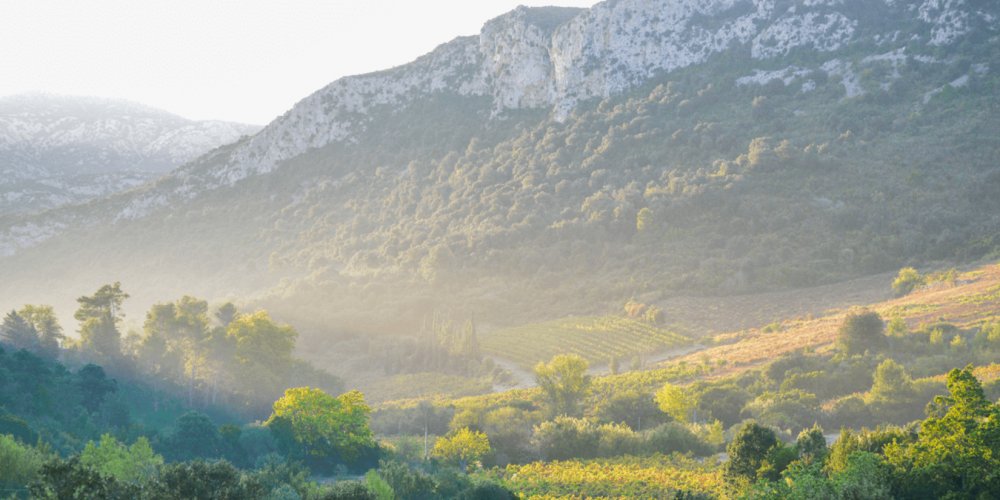Wine cooperatives are a pillar of French viticulture. They unite winegrowers around a shared passion. By pooling resources, they defend collective know-how and quality production.
If you're interested in wine-related articles, download our app for IOS or Android. It will give you access to our wine lexicon, our articles and our innovative solution, designed for all wine consumers and collectors.
The history of wine cooperatives in France
The first wine cooperatives appeared at the beginning of the 20th century. They were born against a backdrop of crisis. Isolated winegrowers were struggling to sell their produce. Cooperation became a practical solution. It enabled them to share tools, winemaking and marketing. The model quickly caught on. It spread to all French wine-growing regions. Today, over 50% of French collective wines come from a cooperative.
Languedoc: the Cave de Castelmaure, an inspiring example

Heading south, to the heart of the Corbières. The Cave de Castelmaure brings together some sixty winegrowers. Founded in 1921, it is a pioneer in its field. It is committed to innovation while respecting tradition. Thanks to a rigorous plot-by-plot selection process, Cave Castelmaure is able to produce renowned cuvées. The design of its labels also catches the eye. This model shows that cooperation can go hand in hand with creativity.
Rhône Valley: Cairanne, a collective success story
In the Vaucluse region, the Cave Coopérative de Cairanne embodies excellence. It brings together more than 80 winegrowers. Together, they promote the Côtes-du-Rhône Villages appellation. Each winemaker is committed to a strict quality charter. The grapes are carefully vinified. Together, they produce complex, powerful wines. This success demonstrates the strength of the collective.
Bordeaux: Tutiac, a cooperative giant
Head for the banks of the Garonne with Les Vignerons de Tutiac. With over 500 winegrowing families, this is one of France's largest wine cooperatives. It covers a vast area of the Bordeaux vineyards. Tutiac is constantly innovating. It focuses on sustainable agriculture and wine tourism. By integrating cutting-edge winemaking techniques, it reinforces the image of collective French wines in a region dominated by private châteaux.
Champagne: Nicolas Feuillatte, the success of a cooperative brand
Champagne is often thought of as a world reserved for the big houses. Yet Nicolas Feuillatte is a cooperative brand. It brings together over 5,000 Champagne growers. Each harvester contributes to the prestige of the house. Thanks to this union, the cooperative offers a quality alternative to the big historic brands. It exports its cuvées to over 80 countries. The cooperative model is a collective success story.
Alsace: Wolfberger, tradition and modernity
The Wolfberger cooperative cellar, founded in 1902 in Eguisheim, today brings together over 400 winegrowers. It plays a central role in the development of Alsace grape varieties. Wolfberger invests in high-performance tools. It is also developing an organic range. At the same time, it is opening up to art and design, modernizing the image of collective French wines. This dynamic approach is attracting a new generation of wine lovers.
Provence: the Vidauban cooperative sets the standard for rosé wines

In the heart of the Var, the Cave Coopérative de Vidauban specializes in Provence rosés. More than 180 winegrowers take part. Together, they produce elegant, fruity cuvées. Collective efforts focus on soil preservation and biodiversity. The winery also invests in modern facilities. It is the perfect embodiment of a quality-oriented wine tour of France.
Beaujolais: the Château de Chénas cellar, between tradition and renewal
In the Beaujolais region, the Château de Chénas cellar brings together some fifty winegrowers. Together, they work on crus such as Chénas, Moulin-à-Vent and Fleurie. The cellar focuses on the expression of terroir. It also promotes sustainable agriculture. Thanks to this collective effort, Beaujolais wines are back on the map.
Savoie: the Cruet cellar in the heart of the Alps
Less well known, the Cruet cooperative cellar is located at the foot of the mountains. It brings together around a hundred winegrowers. Together, they develop local grape varieties such as Jacquère and Mondeuse. The alpine climate lends freshness and minerality to the wines. This cooperative model helps preserve Savoie's winemaking traditions.
Corsica: the union of winegrowers on the Isle of Beauty
Corsican viticulture is also developing thanks to the cooperative wine cellars. The island's winegrowers' union brings together several local cooperatives. Together, they promote indigenous grape varieties such as Niellucciu and Vermentinu. They invest in eco-responsible approaches. This collective dynamic enables Corsica to shine in the landscape of collective French wines.
The role of cooperative wineries in the future of wine
Wine cooperatives must adapt to contemporary challenges. Climate change is disrupting practices. Consumer demand is evolving. Digital technology is making its mark on farm management. In the face of these changes, cooperation remains a powerful lever. It makes it possible to invest in research, pool efforts and pass on collective know-how.
The French wine tour reveals an unsuspected wealth. The collective French wines bear witness to a lasting commitment. Behind each bottle lies a shared history. Consumers benefit from the transparency and proximity often lacking in large-scale production.
If you enjoyed this article, don't hesitate to read the following one "Discovering the wines of Moldavia"which may also be of interest to you!





